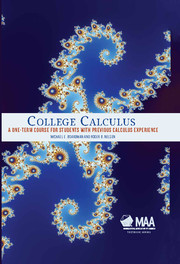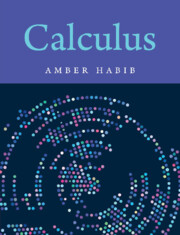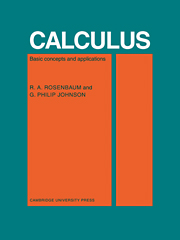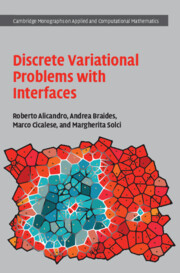Cameos for Calculus
To the benefit of both teachers and students, Cameos for Calculus presents fifty short visual and geometric enhancements to the first-year calculus course. These range from mainstream topics, such as the derivative and combinatorial formulas used to compute Riemann sums, to equally accessible material less often encountered in the course, such as the Cauchy–Schwarz inequality and the Euler–Mascheroni constant. The fifty cameos are grouped into five sections: Limits and Differentiation; Integration; Infinite Series; Additional Topics; and an appendix on precalculus topics. Many of these also include exercises with solutions to enhance learning. By gathering various cameos, including many adapted from journal articles and some created for this book, Nelsen presents a collection accessible to teachers of calculus, both for use in the classroom and as supplementary explorations for students.
- Presents fifty enhancements or supplements for the first-year calculus course
- Includes both mainstream topics and accessible topics not usually encountered in the course
- Cameos are either adapted from MAA or mathematical journals, or created specifically for this book
Product details
February 2016Hardback
9780883857885
180 pages
261 × 183 × 15 mm
0.49kg
This item is not supplied by Cambridge University Press in your region. Please contact Mathematical Association of America for availability.
Table of Contents
- Preface
- Part I. Limits and Differentiation:
- 1. The limit of (sin t)/t
- 2. Approximating π with the limit of (sin t)/t
- 3. Visualizing the derivative
- 4. The product rule
- 5. The quotient rule
- 6. The chain rule
- 7. The derivative of the sine
- 8. The derivative of the arctangent
- 9. The derivative of the arcsine
- 10. Means and the mean value theorem
- 11. Tangent line inequalities
- 12. A geometric illustration of the limit for e
- 13. Which is larger, eπ or πe? ab or ba?
- 14. Derivatives of area and volume
- 15. Means and optimization
- Part II. Integration:
- 16. Combinatorial identities for Riemann sums
- 17. Summation by parts
- 18. Integration by parts
- 19. The world's sneakiest substitution
- 20. Symmetry and integration
- 21. Napier's inequality and the limit for e
- 22. The nth root of n? And another limit for e
- 23. Does shell volume equal disk volume?
- 24. Solids of revolution and the Cauchy–Schwarz inequality
- 25. The midpoint rule is better than the trapezoidal rule
- 26. Can the midpoint rule be improved?
- 27. Why is Simpson's rule exact for cubics?
- 28. Approximating π with integration
- 29. The Hermite–Hadamard inequality
- 30. Polar area and Cartesian area
- 31. Polar area as a source of antiderivatives
- 32. The prismoidal formula
- Part III. Infinite Series:
- 33. The geometry of geometric series
- 34. Geometric differentiation of geometric series
- 35. Illustrating a telescoping series
- 36. Illustrating applications of the monotone sequence theorem
- 37. The harmonic series and the Euler–Mascheroni constant
- 38. The alternating harmonic series
- 39. The alternating series test
- 40. Approximating π with Maclaurin series
- Part IV. Additional Topics:
- 41. The hyperbolic functions I: definitions
- 42. The hyperbolic functions II: are they circular?
- 43. The conic sections
- 44. The conic sections revisited
- 45. The AM-GM inequality for π positive numbers
- Part V. Appendix: Some Precalculus Topics:
- 46. Are all parabolas similar?
- 47. Basic trigonometric identities
- 48. The addition formulas for the sine and cosine
- 49. The double angle formulas
- 50. Completing the square
- Solutions to the exercises
- References
- Index
- About the author.






